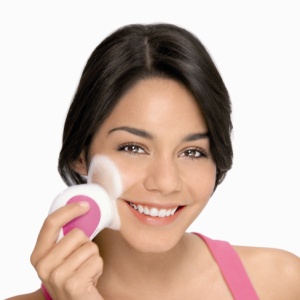
The media in the United States is full of provocative images and stereotypes. We, the television watchers, the radio listeners and the magazine readers, come into contact with the media multiple times every single day. It fills our minds with whatever advertisers want to fill it with.
But what does this mean for our generation? According to BBC Health, two thirds of female teenagers in the United States said that the pressure to be thin came from advertisements and celebrities with perfect bodies and male peers.
Men typically like to see fit women in revealing clothing, and women like to see strong men with muscular bodies. For example, Sports Illustrated distributes a swimsuit edition every year. It has the following categories: sexy, exotic, girly and glam. It’s page after page of women in skimpy bikinis. Men are obviously interested in this edition– it sells 4,500,000 copies as compared to the weekly edition at 3,150,000.
An example for women is People magazine’s Sexiest Man of the Year edition. Dedicated reader’s voted on over 100 well-known celebrities. Aside from singling out the winner, People magazine also pointed out “123 super hot men we [women] all love.”
In both examples, every woman in a bikini and every “super hot” man have one thing in common: they are all beautiful people- photo shopped and “perfect.”
By glorifying these kinds of people, the media pressures adolescents into wanting to mirror the people they see.
In a way, it is good that advertisers pressure people to stay in shape; that’s healthy. What makes the media destructive is the perfected pictures and the straight, white teethed people with beautiful, perfect bodies. Most of the pictured people don’t look exactly like their pictures.
“I wish I could see what the models and celebrities look like without make up and the original pictures with no special editing. If the “most beautiful women in the world” don’t actually look like their pictures, who’s to say they are actually beautiful? It’s really annoying,” Kaleigh Thompson, sophomore, said.
When teenagers pick up a magazine or watch a commercial, the touch ups and photo edits don’t always cross their mind. For example, in every face wash commercial, the actor or actress has unrealistically perfect skin claiming the product they’re advertising is the reason they have it. Teens may roll their eyes because they don’t believe the product will do that, or because they don’t think they’ll ever have “perfect skin.” Perfect skin doesn’t exist! Advertisements try to convince their viewers that it is realistic, just to promote sales.
Mr. Hardy, marketing teacher, expresses his opinion. “I believe that some teens can not see the difference between T.V., Internet, magazines or any type of advertisements compared to reality. This causes them to think that certain behaviors and ideas are acceptable which should not be.”
Television carefully times their advertisements to target teens. Skin care commercials usually air between 3-10pm because most teenagers are home and possibly watching T.V. A skin care company knows not to play their commercials between 7-2pm because most teenagers are in school. The media purposely targets teenagers at the most profitable times.
Many factors come together in the issue of media’s influence on teenagers. Whether or not teenagers fall in the trap of the media, it is still a huge part of every one’s life. Teens need to be able to distinguish between real, natural beauty and edited pictures and photo shop. Once teenagers realize that their appearance isn’t everything, they can break free from the unbelievably high expectations set by the media.
Leave a Reply